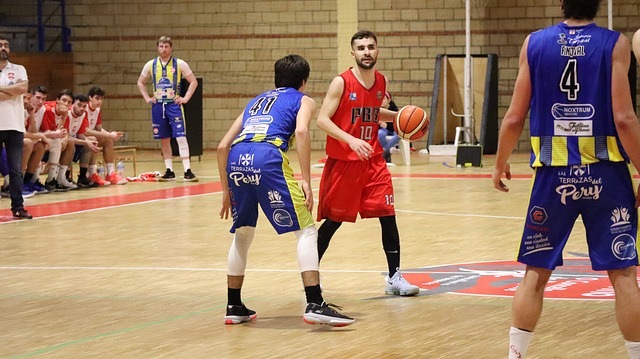Mixed Martial Arts (MMA) has evolved dramatically over the years, adopting and refining countless techniques from various martial arts disciplines. Among these techniques, ground and pound remains one of the most effective and brutal methods of finishing a fight. Despite appearing straightforward, ground and pound requires a combination of strategy, positional control, and precision striking to execute effectively.
Let’s break down exactly what ground and pound is, why it’s so widely used in MMA, and how you can apply it like some of the sport’s greatest champions, including Khabib Nurmagomedov.
What is Ground and Pound in MMA?
Ground and pound is a tactical maneuver where a fighter takes their opponent to the mat, secures a dominant position, and delivers a series of powerful strikes—typically using punches, elbows, and hammer fists. The goal is simple: overwhelm the opponent either into submission, a technical knockout (TKO), or to open them up for submissions.
The phrase itself combines two elements: “ground” refers to taking your opponent down, and “pound” refers to the forceful strikes you rain down on them. It is not just about brute force; it is about control, patience, and methodical aggression.
Why Do MMA Fighters Use Ground and Pound?
Ground and pound serves multiple purposes in professional MMA:
- Secure a TKO Victory: Continuous, unanswered strikes force the referee to step in and stop the fight, resulting in a technical knockout.
- Create Openings for Submissions: When a fighter is under heavy fire, their defense often shifts to pure survival mode. This can expose key areas, allowing you to transition into submission holds like armbars or rear-naked chokes.
In addition to these, ground and pound psychologically drains an opponent. Being stuck underneath a barrage of strikes with no clear escape route is mentally exhausting and demoralizing.
How to Execute Ground and Pound Like Khabib Nurmagomedov
No conversation about ground and pound is complete without mentioning Khabib Nurmagomedov, the former UFC Lightweight Champion, widely regarded as one of the greatest grapplers in MMA history. Khabib’s approach to ground and pound was methodical, oppressive, and highly effective.
Here’s a breakdown of how to apply ground and pound using Khabib’s techniques:
1. Achieve a Dominant Position
Before you can throw a single punch, you need to take control. Positions like full mount, half guard, side control, and back mount are optimal. Khabib famously used a mix of the Dagestani handcuff (trapping one of the opponent’s arms) and wrist control to limit the opponent’s ability to defend.
2. Maintain Balance and Base
To avoid being swept or reversed, fighters lower their center of gravity and maintain a strong base. Khabib, for instance, would use his hips, knees, and shoulders to pin his opponent to the mat, making it almost impossible for them to scramble or escape.
3. Mix Up Your Strikes
Mindless punching is a common beginner mistake. Khabib diversified his ground and pound by mixing hammer fists, short elbows, and straight punches. He also targeted different areas—switching from head strikes to body shots to break down his opponent’s guard and stamina.
4. Neutralize Their Defense
Great ground and pound involves not just striking but also disabling the opponent’s defensive tools. Khabib often used his left hand to pull away an opponent’s guard, exposing their face for the right hand to rain down strikes. By applying head pressure with his forehead or shoulder, he limited their mobility, forcing them into a purely defensive shell.
5. Prevent Escapes
By constantly applying pressure and controlling the hips, a fighter can prevent an opponent from recovering guard or creating space to stand up. Khabib excelled in this, never allowing his opponents to breathe or create distance.
Ground and Pound from Standing Position
While most associate ground and pound with mount or guard positions, standing ground and pound is equally dangerous. Here’s how you can maximize its effectiveness:
- Take your opponent down and stand over them.
- Step one leg forward and bend your knees slightly.
- Circle around your grounded opponent to create a perpendicular angle.
- From this angle, throw heavy hammer fists and punches while neutralizing their guard with your free hand.
Standing ground and pound often results in devastating power due to gravity and momentum, making it highly effective against fatigued or disoriented opponents.
Ground and Pound from the Guard Position
Many fighters find themselves in the guard position—inside their opponent’s closed guard. Here’s how to effectively strike from there:
- Stay on your toes to allow fast transitions if needed.
- Keep your weight forward and close to your opponent’s chest.
- Slide your arms inside your opponent’s to open up strike paths.
- Control their hips while pinning their upper body to the mat.
- Mix hammer fists and elbows, and always vary your strikes to keep your opponent guessing.
Pro Tips for a Perfect Ground and Pound
1. Stay Heavy
In mount or side control, stay heavy on your opponent. Distribute your weight through your hips and chest, limiting their ability to move or breathe comfortably. A heavy top game is key to grinding out dominant ground and pound.
2. Use Your Head
Literally. Push your forehead against your opponent’s chin, face, or jawline to make them uncomfortable and restrict their head movement. This also frees up your arms for more impactful strikes.
3. Create a False Sense of Security
Pause momentarily, making your opponent believe you’re transitioning to a submission. Then, unleash a powerful elbow or punch when they relax for that split second.
4. Suffocate and Strike
Place your palm over their mouth and nose to increase discomfort and force a reaction. Once they turn their head to escape the pressure, deliver a sharp elbow or hammer fist to the exposed side.
Conclusion
Ground and pound is a vital part of modern MMA. When performed correctly, it not only leads to finishes but also establishes dominance over opponents both physically and psychologically. Whether you’re a BJJ specialist or a striker transitioning to MMA, mastering this technique will make you a more complete and dangerous fighter.











